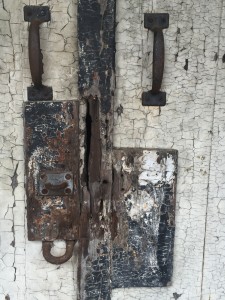There Are No Dead Ends
Except for a single half-sheet of paper issued on the day I was released from prison, I have no official documentation of my time in Guatemala. In the intervening years, I have spoken about my experience with journalists who have written about Latin America, as well as with professors in the United States and Canada who research international adoption and the political history of Guatemala. Those conversations, although helpful, still left me needing an answer. Why was I arrested? For several years, I considered submitting a Freedom of Information Act (FOIA) request to the State Department for their files. Every time I thought about it seriously, I let fear stop me. What if the information contradicted my memory of events? What if there were no files at all? Again and again, I put the idea aside and focused on learning to tell other parts of the story.
At my core, I am curious and stubborn. When I want to know the reason behind a public event or a private action, fear eventually ceases to be an obstacle. The search for my records was no exception. I reached a point in the writing where the question of proof began to gnaw at me again. This time, I tracked down the Federal Open Government Guide published by the Reporters Committee for Freedom of the Press, read the relevant sections, and printed out a sample FOIA Request. I began to think about my story like a lawyer again; the analysis led me to the State Department’s Records Schedule, where I learned that any records about my case were held for only three years. They were destroyed long before I thought to search for them.
The absence of an official file was a setback; but once I decide to act, I am not easily deterred. In the Records Schedule, there was a reference to the National Archives, a repository for State Department documents that required long retention periods. That search didn’t yield anything useful, but it reminded me that one of the professors with whom I spoke told me there was a National Archive for Guatemala. I Googled those keywords again, and serendipity struck. The archive is available online.
Years ago, in my final conversation with Enrique Gonzalez Rodriguez, the Guatemalan attorney who secured my release from Santa Theresa, he said there would always be one secret record of my arrest, even after the official record was expunged. At the time, I didn’t know that the Guatemalan National Police kept meticulous records of the violence they perpetrated against the civilian population during decades of civil war. Those records were discovered by accident, moldering in a building scheduled for demolition on the grounds of a National Police compound in 2005. (Click here to view a five-minute film about the preservation of these documents.) The archives are now housed at the University of Texas, Austin, where they have been digitally catalogued. A .pdf of the 45-page Users Guide to the archive sits on my desktop, waiting to be mastered.
The U.S. files on my arrest may be gone; but the original records of my arrest—the mugshot, the fingerprints, the official statement—could be in the Guatemalan National Police archive in Texas. What’s more, a detailed report of the records contained in the archives, including proof that children were kidnapped by members of the Guatemalan military, was translated and published by the University of Oregon in 2013. Up until now, I have relied on a brief news story written about the contents of the report before it was translated. Now I can read the report in full. I wonder where the 500+ pages of From Silence to Memory: Revelations of the AHPN (Archivo Histórico de la Policia Nacional) will lead me.
In the search for the truth, there are no dead ends, just new doors to open.


Jerri Dell
Another fascinating blogpost, Mary. When will you be going to Austin? (Did I ever tell you that “The Portal to Bohemia” is under glass at the University of Texas, Austin? This is the door of Floyd Dell’s flat on Christopher Street in Greenwich Village–on which hundreds of well-know writers affixed their signature — before it disappeared and Floyd’s flat was torn down about 1922. Maybe you and I should go to Austin and check out their collections together!
maryscherf
I didn’t know that about Floyd Dell’s door, Jerri. I don’t know when (or if) I’m going to Austin, but if I do go, it would be terrific to bring along an experienced archive researcher and friend like you!
Jerri Dell
I would love it!